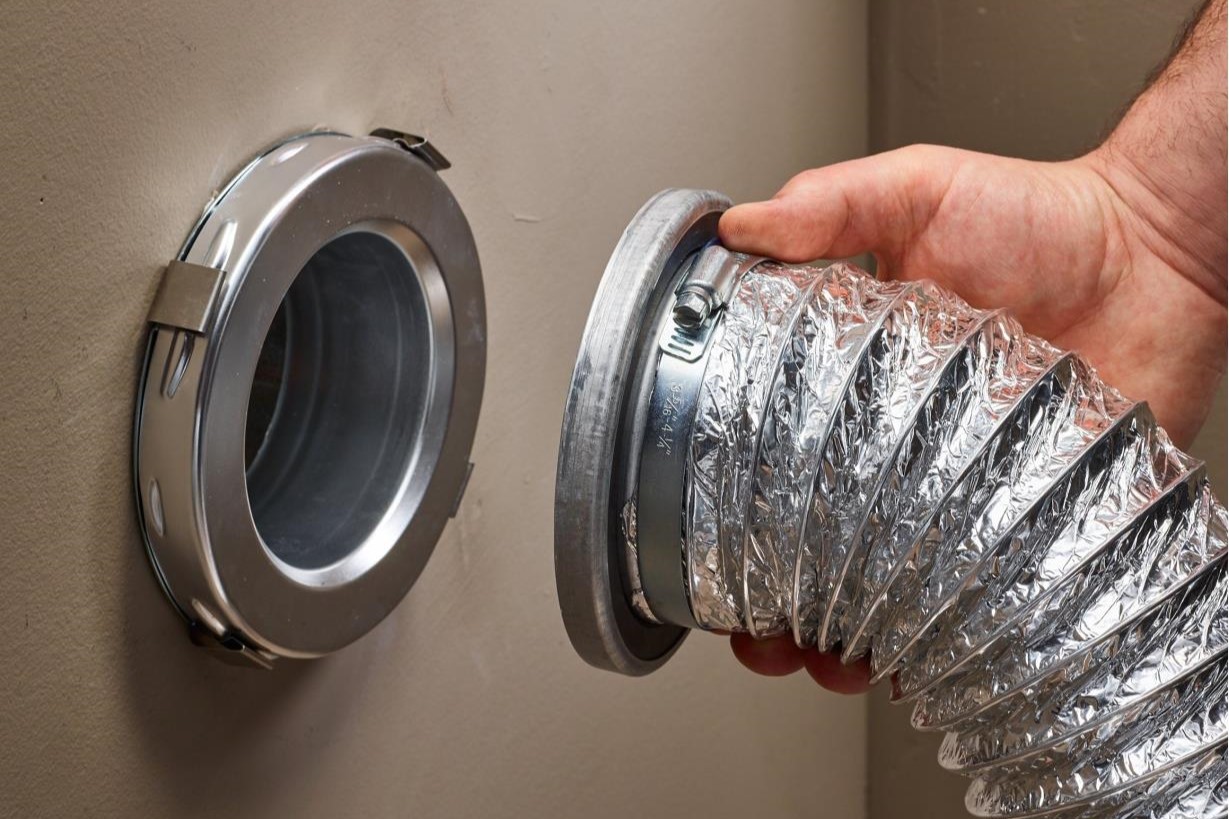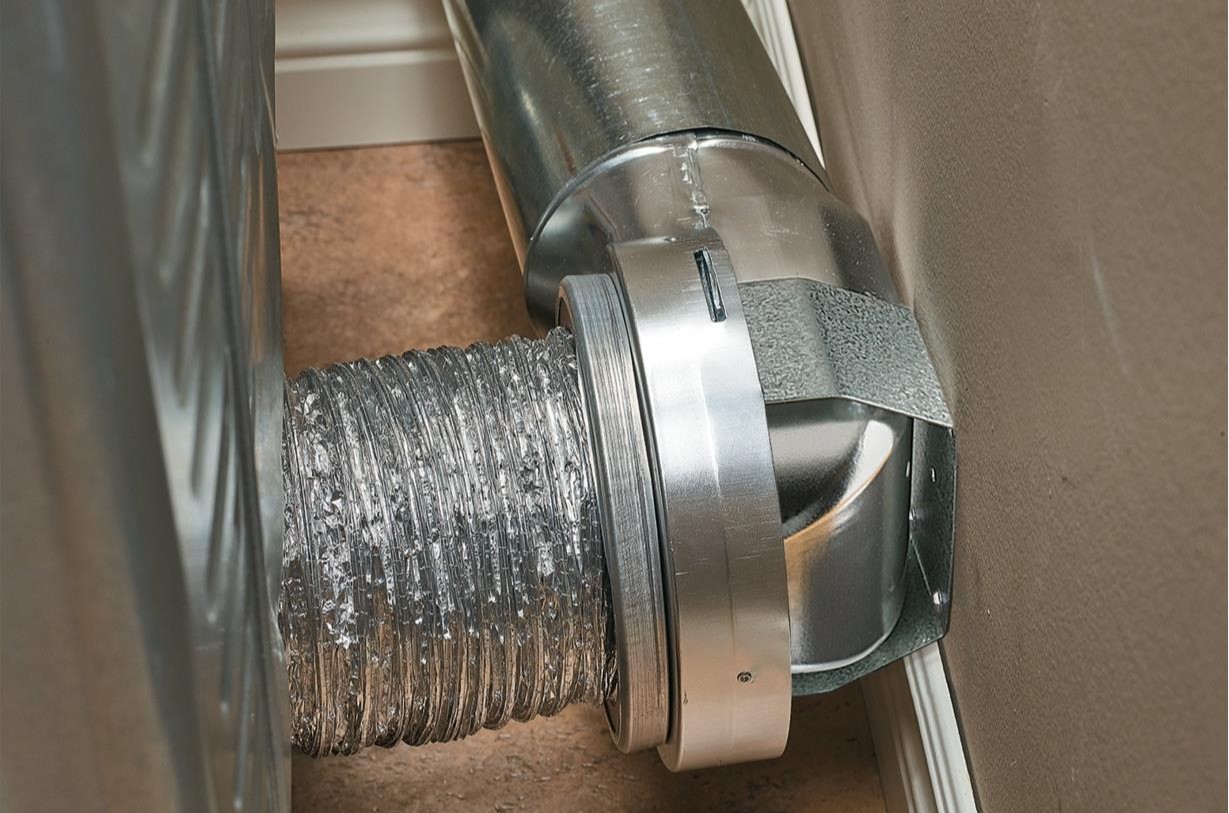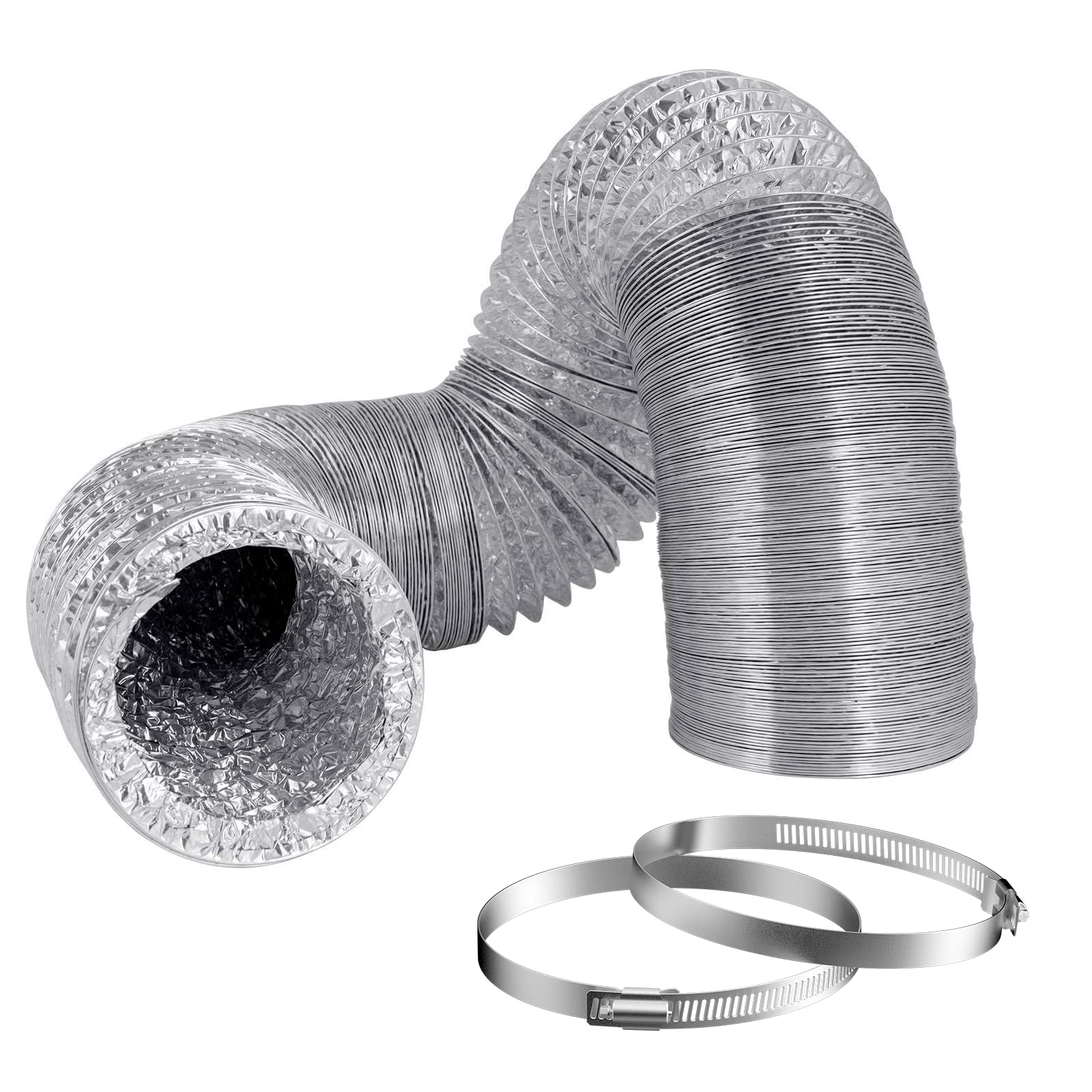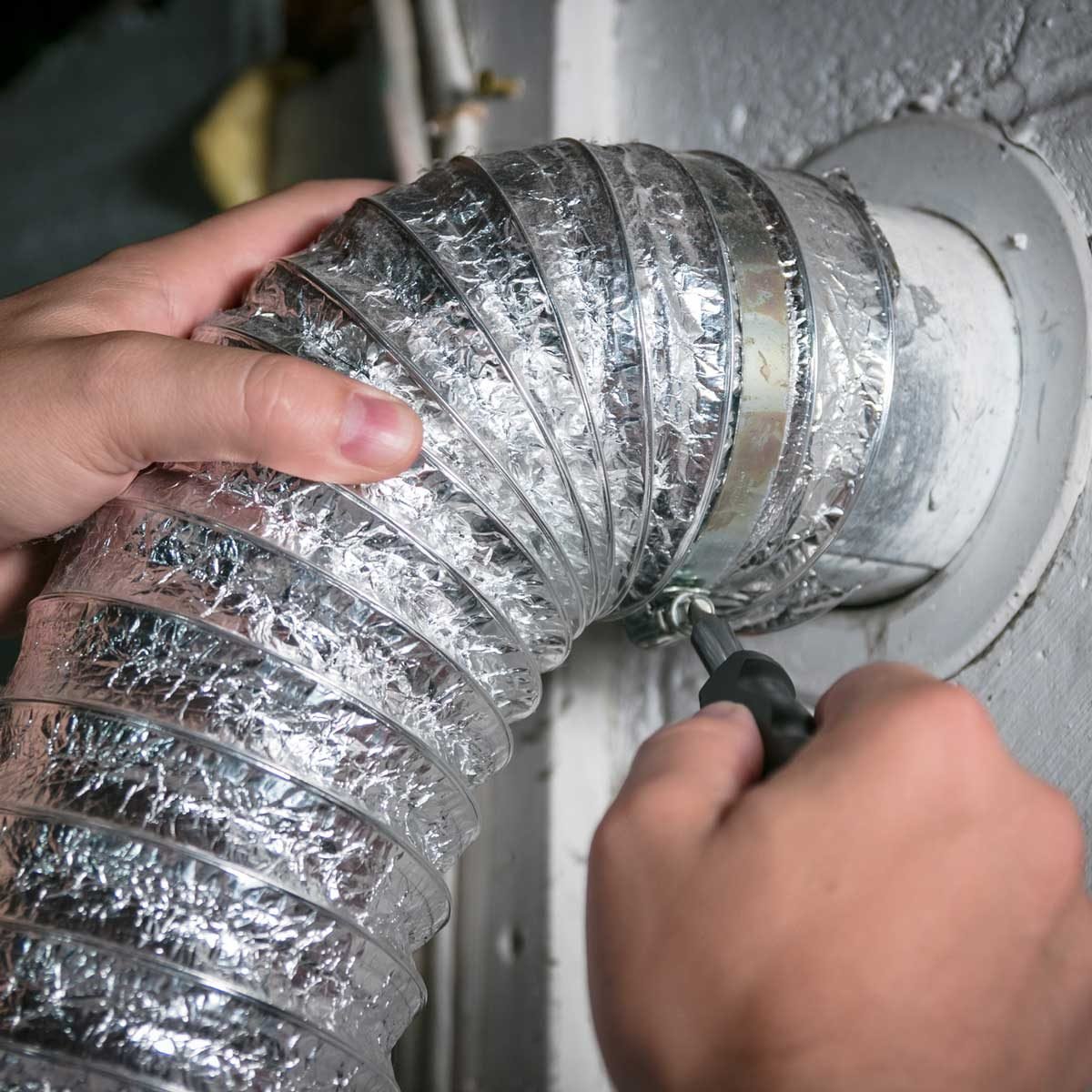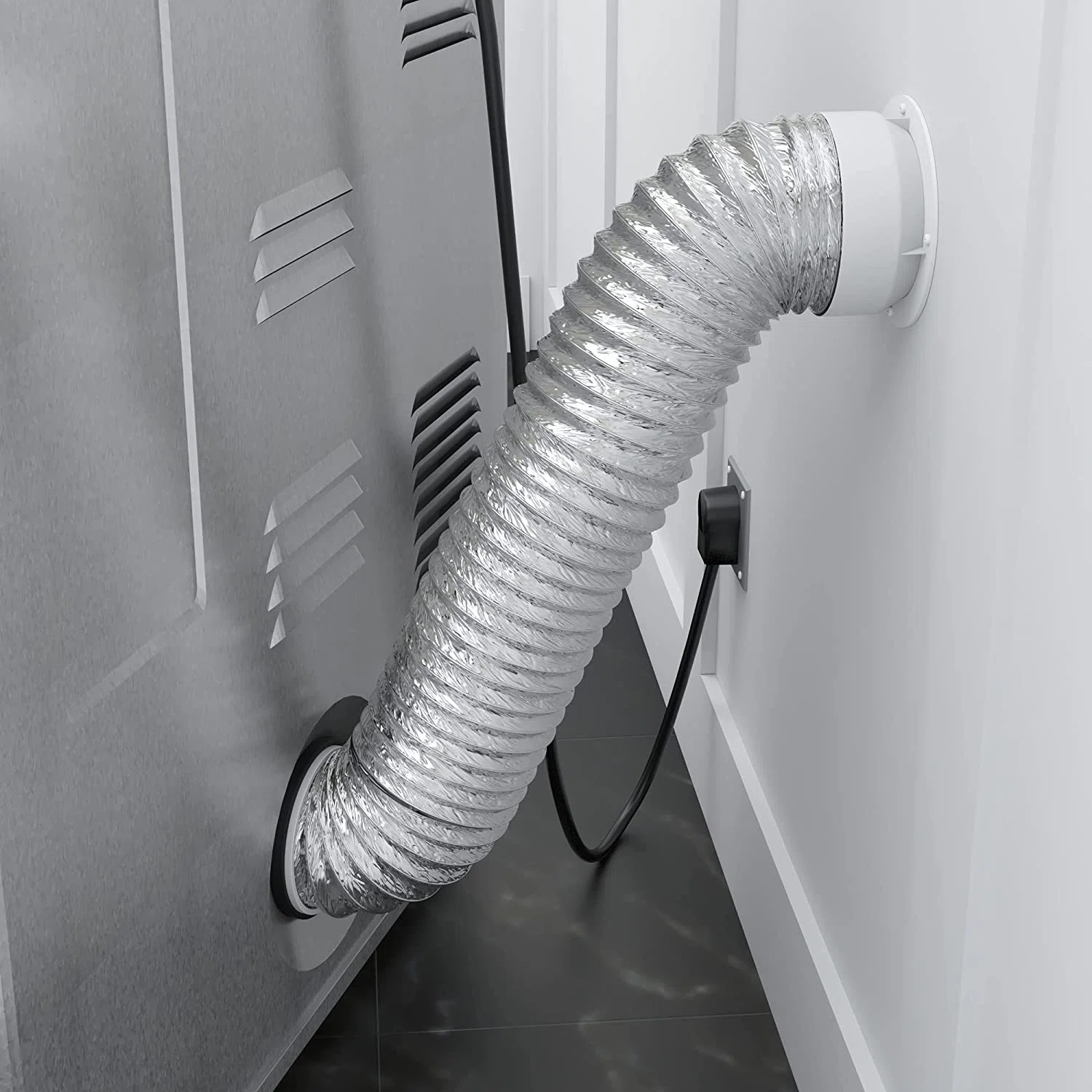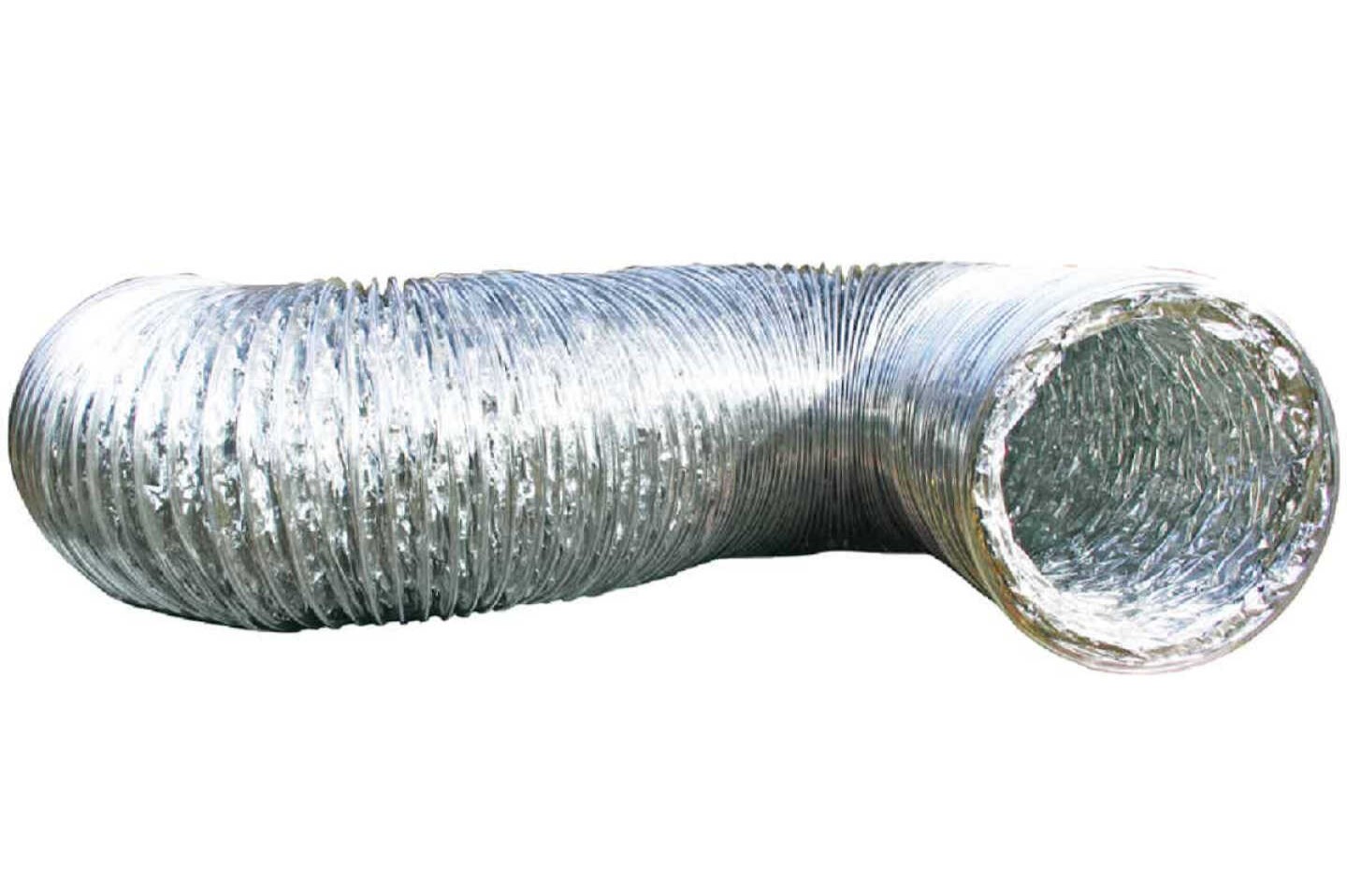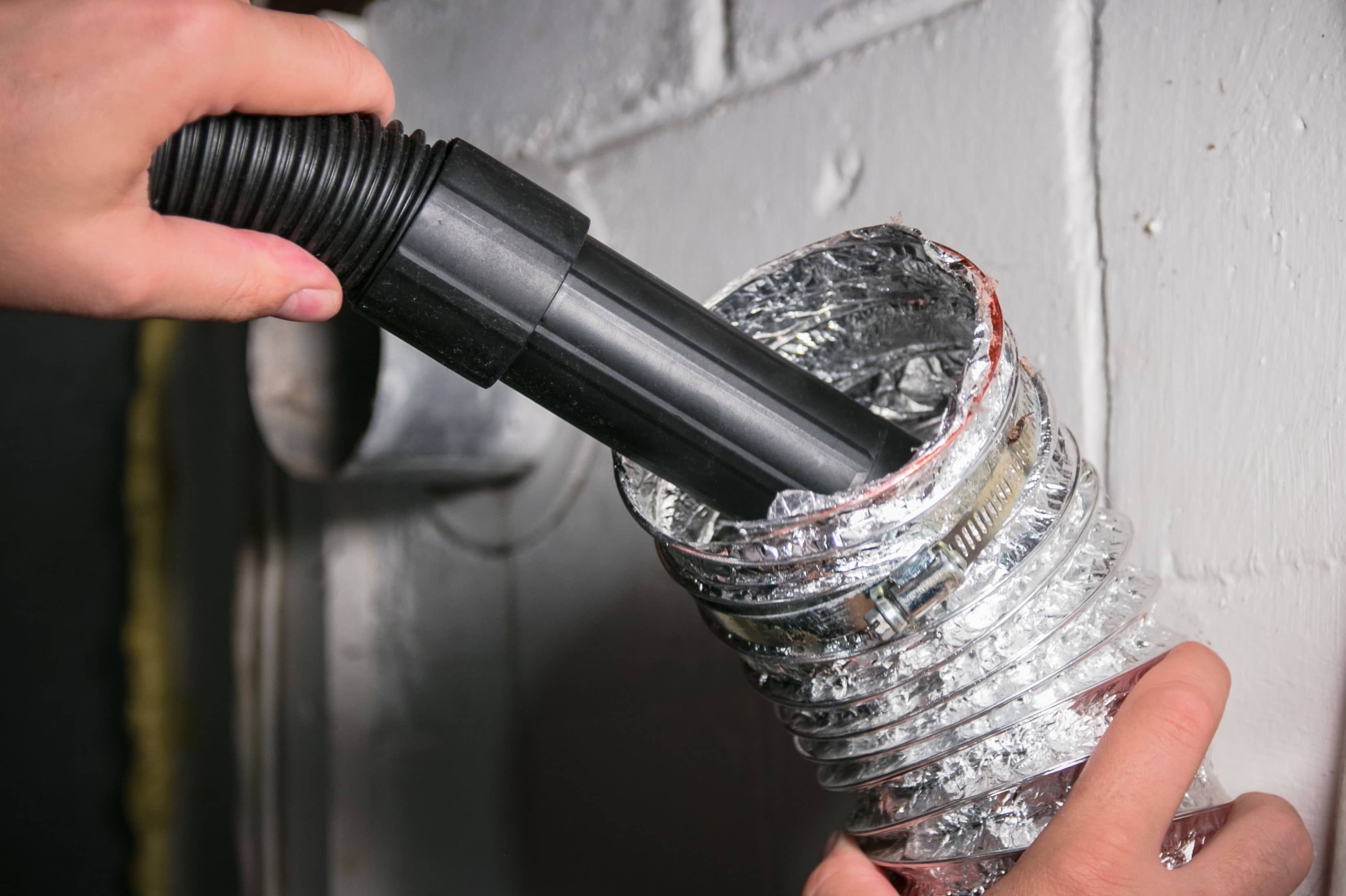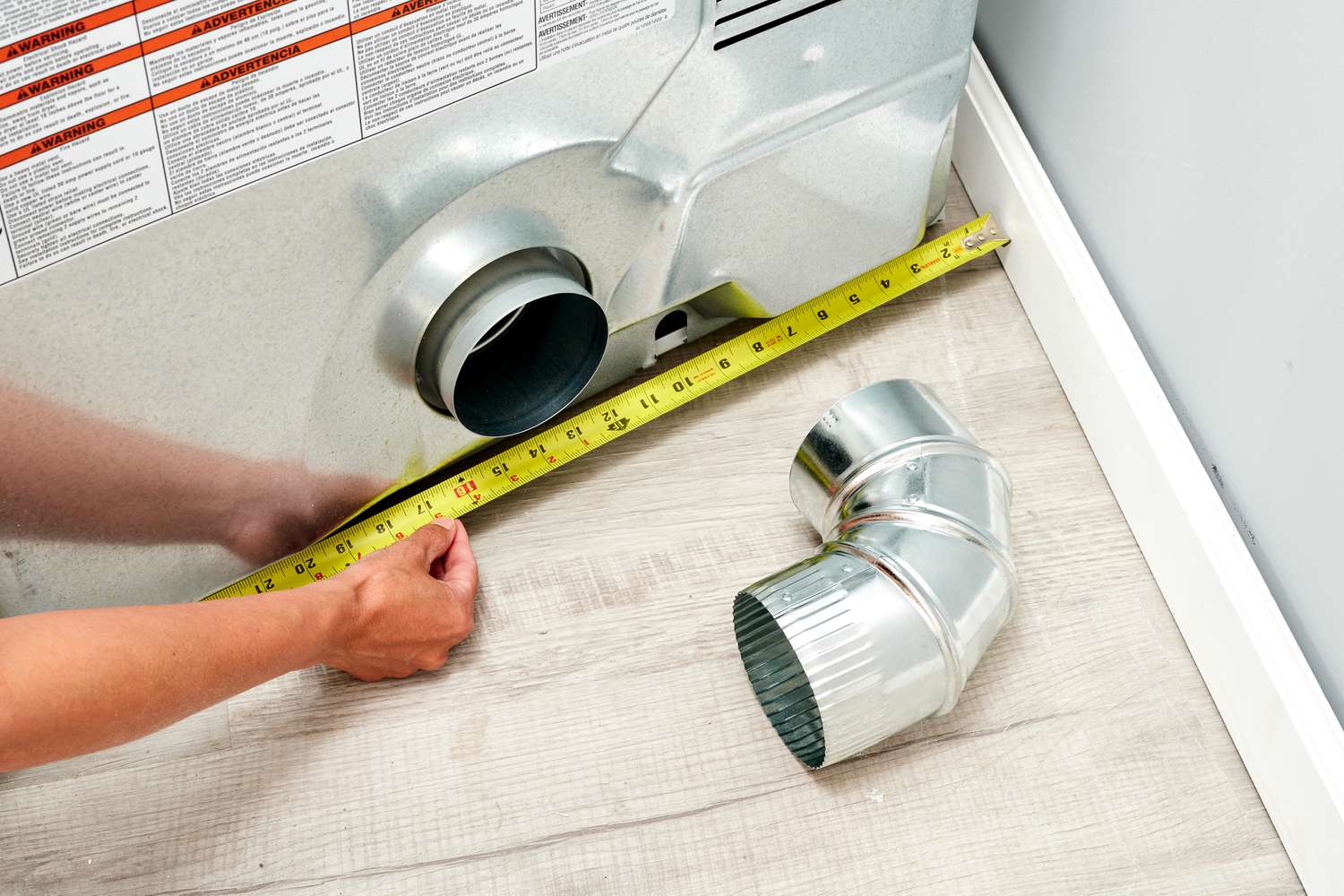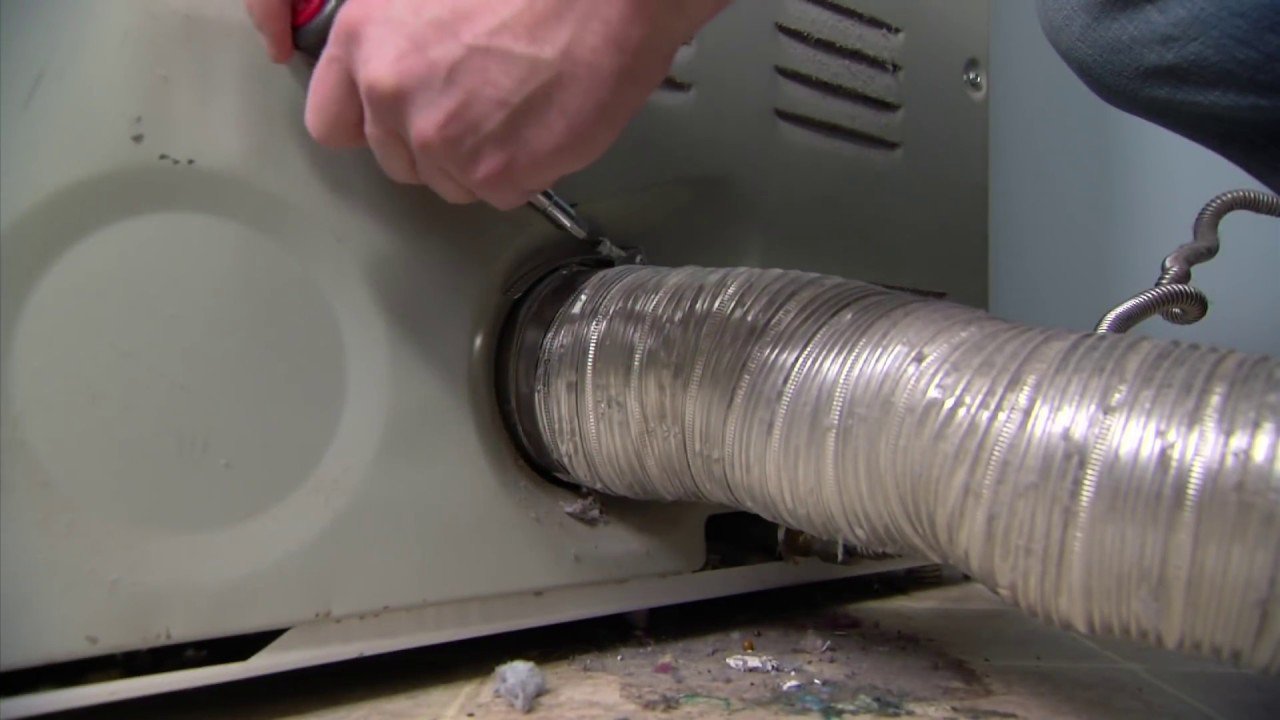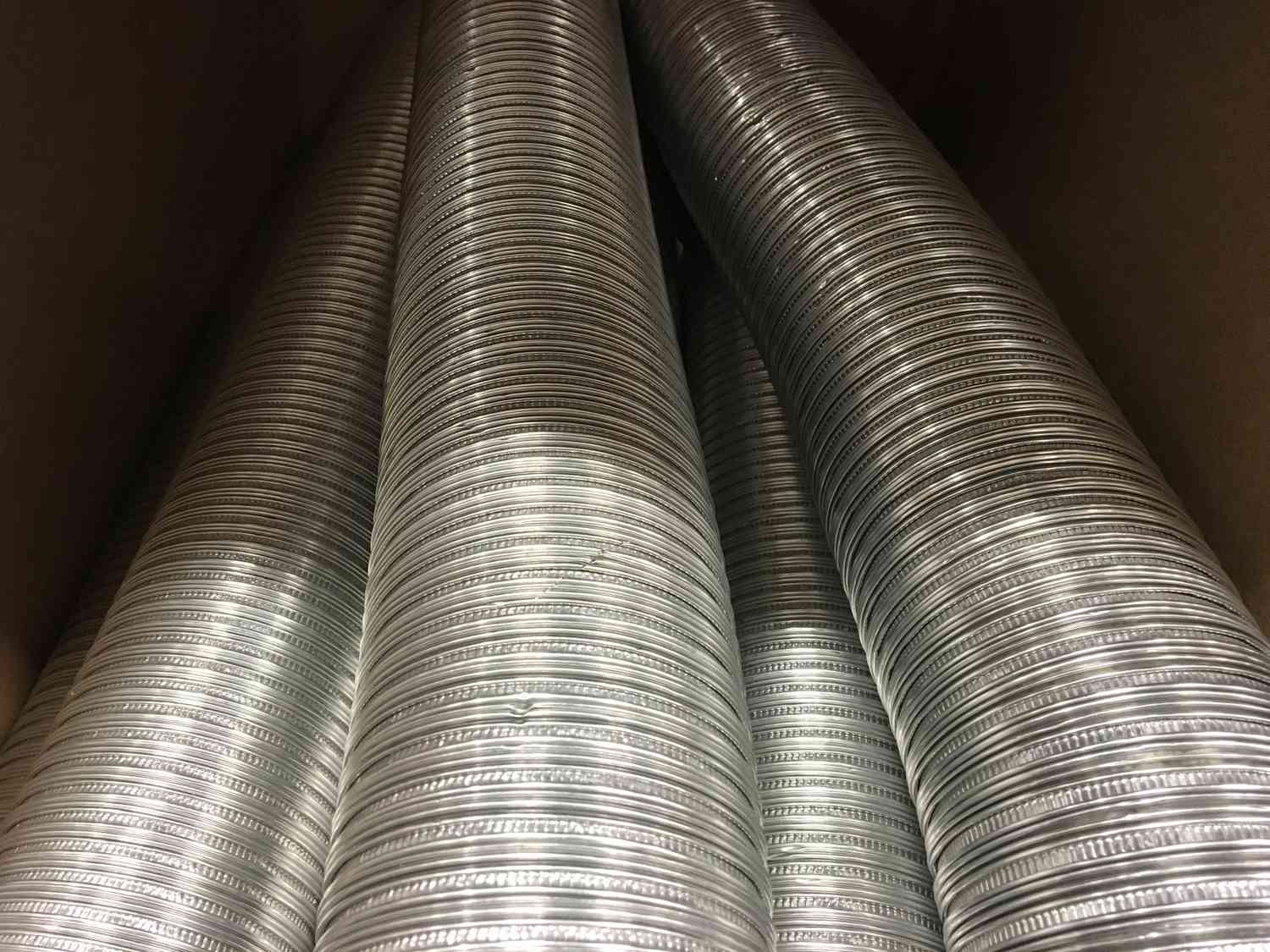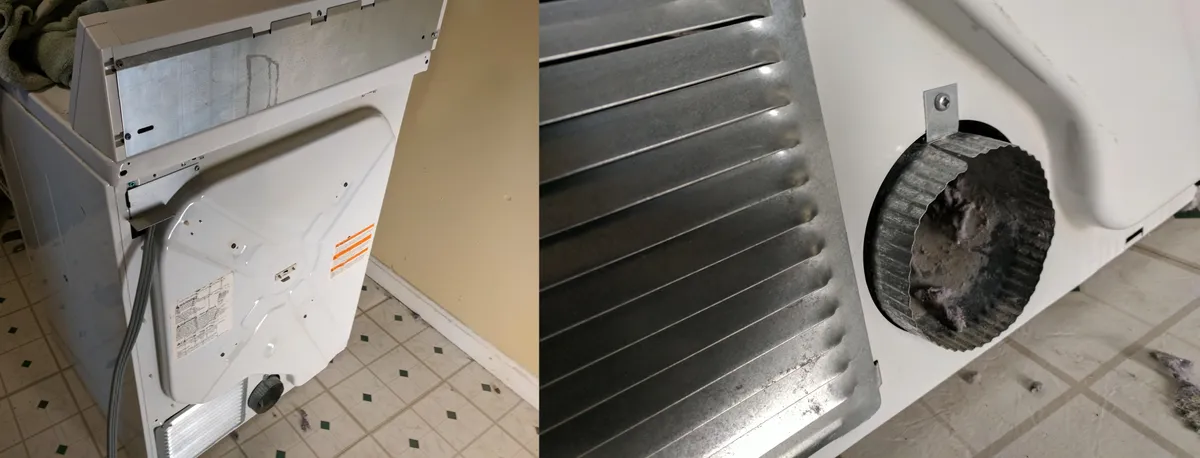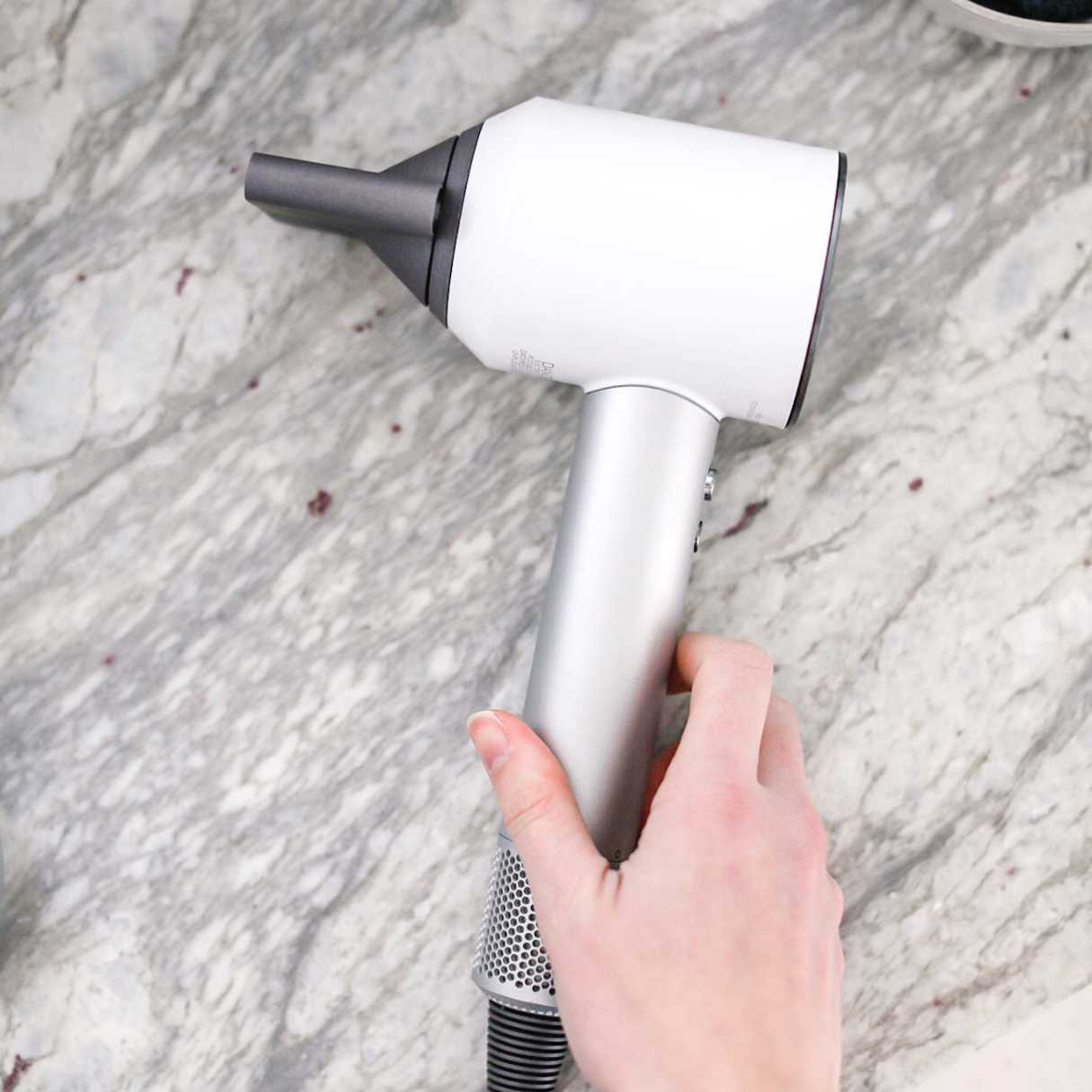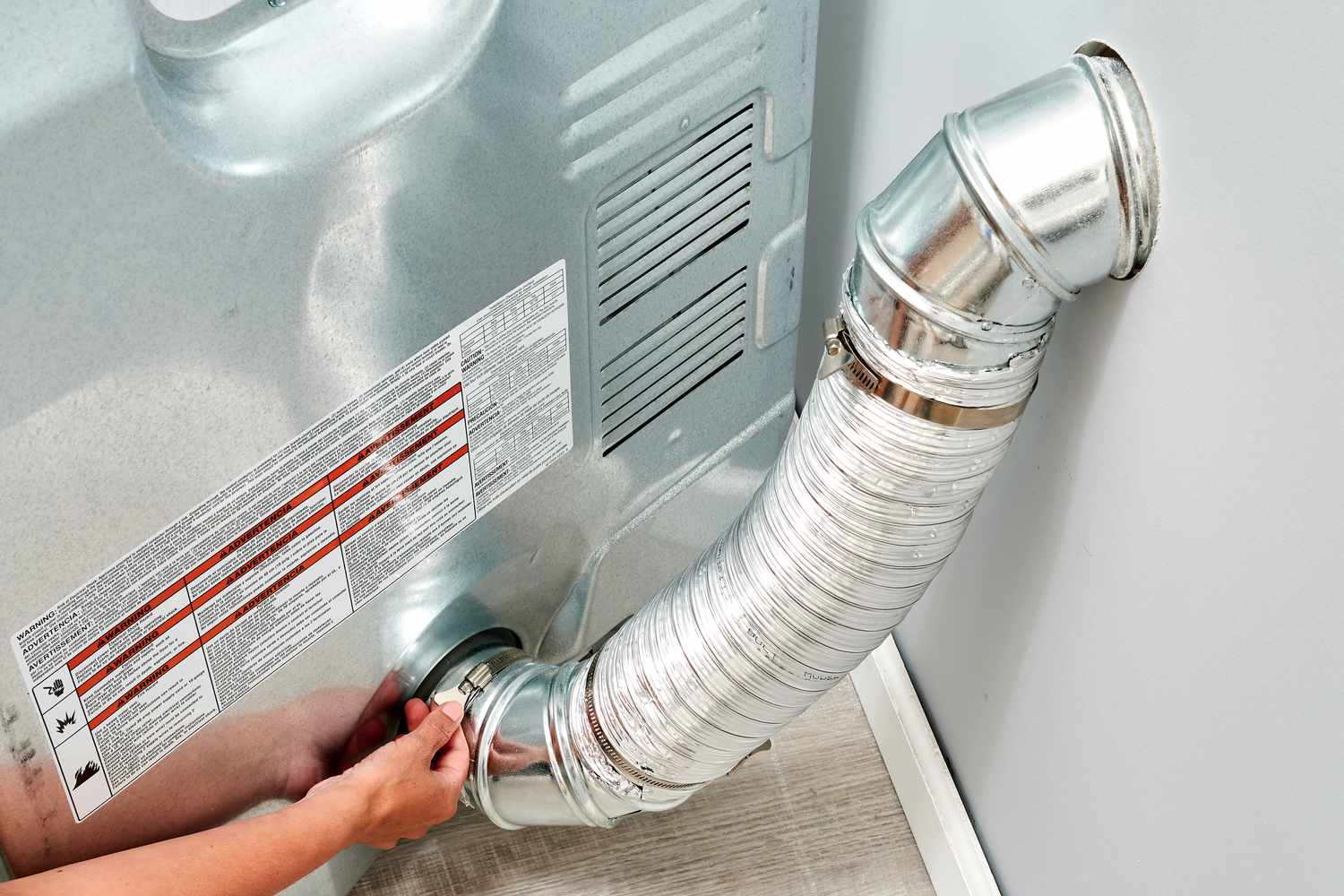Home>Home Maintenance>What Happens If A Dryer Vent Is Not Connected
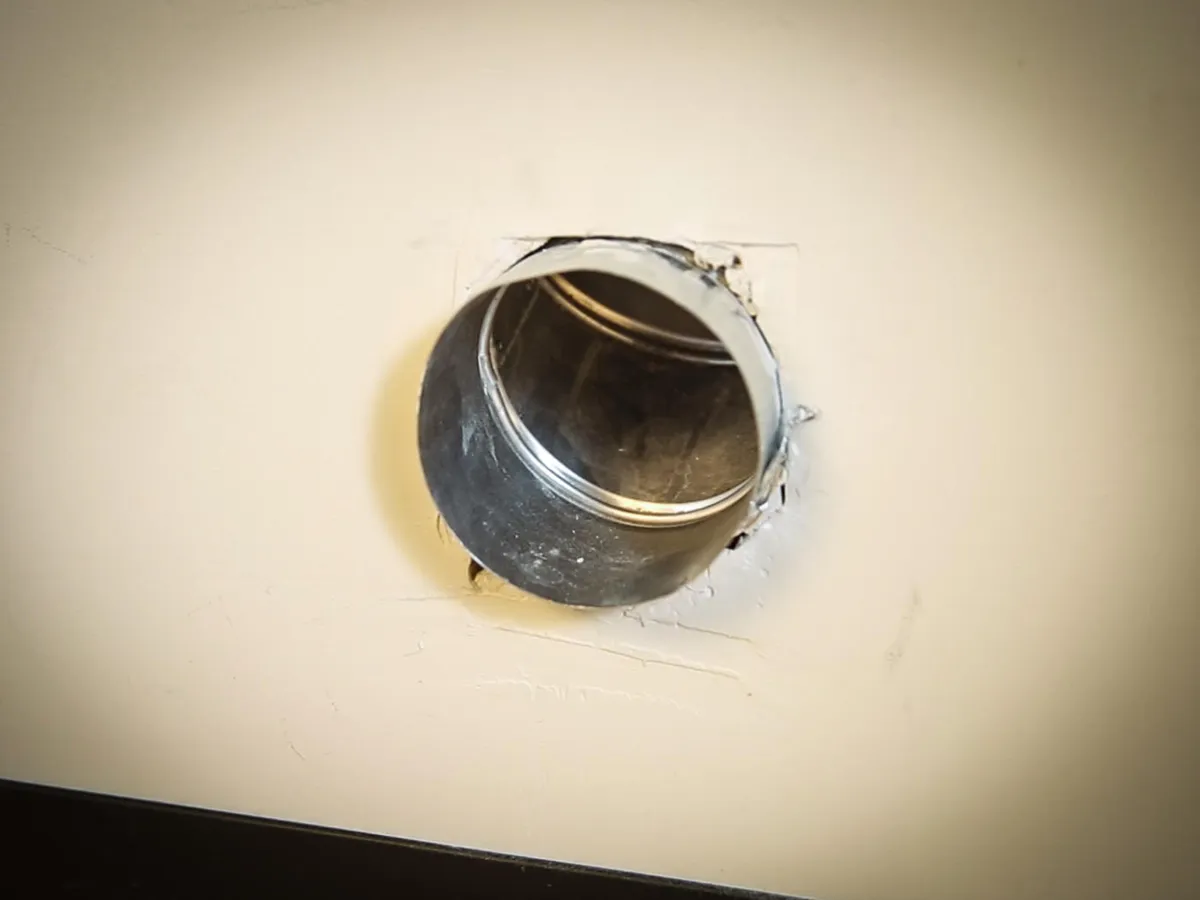

Home Maintenance
What Happens If A Dryer Vent Is Not Connected
Modified: August 27, 2024
A disconnected dryer vent can lead to serious safety hazards and reduce the effectiveness of your home’s drying system. Learn the consequences and importance of proper home maintenance.
(Many of the links in this article redirect to a specific reviewed product. Your purchase of these products through affiliate links helps to generate commission for Storables.com, at no extra cost. Learn more)
Introduction
Welcome to the world of home maintenance! As a homeowner, it’s essential to stay on top of regular upkeep to ensure your house remains a safe and comfortable haven. One crucial aspect of home maintenance that often goes overlooked is the proper connection of your dryer vent.
While a dryer vent may seem like a minor component of your laundry routine, it plays a critical role in maintaining the safety, efficiency, and longevity of your dryer. If a dryer vent is not connected correctly, it can lead to a myriad of problems that can have costly consequences.
In this article, we will explore the importance of a connected dryer vent and the potential risks and hazards that come with a disconnected one. We will discuss how a faulty connection impacts energy efficiency, dryer performance, and poses potential moisture, mold, and fire safety concerns. Additionally, we will provide tips on ensuring a properly connected dryer vent to help you maintain a safe and efficient home.
So, let’s dive in and uncover why a connected dryer vent is essential for the smooth operation of your laundry routine and the overall well-being of your home.
Key Takeaways:
- Properly connected dryer vents are crucial for safety, efficiency, and home maintenance. They prevent fire hazards, reduce energy costs, and ensure optimal dryer performance, creating a safer and more efficient laundry routine.
- Regularly inspect and clean your dryer vent to ensure it’s securely connected. Proper vent maintenance prevents mold growth, reduces fire risks, and extends the lifespan of your dryer, contributing to a safer and healthier home.
Read more: What Happens If A Dryer Vent Falls Off
Understanding the Importance of a Connected Dryer Vent
A connected dryer vent is crucial for several reasons. Firstly, it helps to expel hot air and moisture from your dryer, preventing the build-up of dampness inside your home. This not only keeps your living space comfortable but also helps to prevent mold growth, which can pose health risks and cause damage to your property.
Furthermore, a connected dryer vent plays a vital role in ensuring energy efficiency. When your dryer is properly vented, it can operate more efficiently, reducing energy consumption and lowering utility costs. On the other hand, if the vent is disconnected or obstructed, your dryer will have to work harder, leading to increased energy usage and higher bills.
Another significant benefit of a connected dryer vent is the improvement in dryer performance and functionality. When the vent is correctly installed, the hot air from the dryer is efficiently directed outside, allowing your clothes to dry faster and more effectively. Conversely, if the vent is not connected, the hot air will be trapped, resulting in longer drying times, damp clothes, and potential damage to the dryer itself.
In addition to these practical benefits, a properly connected dryer vent ensures the safety of your home. By expelling hot air and lint from the dryer, it helps to prevent the accumulation of flammable materials. Without a connected vent, lint can build up, creating a fire hazard that puts your family and property at risk.
Overall, understanding the importance of a connected dryer vent is essential for every homeowner. It not only promotes energy efficiency and improves dryer performance but also prevents moisture-related issues, mold growth, and fire hazards. By ensuring that your dryer vent is properly connected, you can enjoy peace of mind, knowing that you are maintaining a safe, efficient, and functional home.
Potential Risks and Hazards of a Disconnected Dryer Vent
A disconnected dryer vent comes with a host of risks and hazards that can impact the safety and functionality of your home. Ignoring or neglecting to address this issue can have costly consequences. Let’s explore some of the potential dangers associated with a disconnected dryer vent:
- Lint Build-up: When a dryer vent is not properly connected, lint particles accumulate inside the dryer and the vent pipe. Excessive lint build-up restricts airflow, causing the dryer to work harder and increasing the risk of overheating. This can ultimately lead to reduced efficiency, longer drying times, and potential damage to the dryer.
- Increased Fire Hazard: Lint is highly flammable, and when trapped in a disconnected vent, it poses a significant fire risk. If the dryer gets too hot due to restricted airflow, lint can ignite, resulting in a potentially devastating house fire. According to the U.S. Fire Administration, around 2,900 home clothes dryer fires are reported each year, causing an estimated 5 deaths, 100 injuries, and $35 million in property loss.
- Indoor Air Quality Issues: When a dryer vent is disconnected, the hot, moist air generated by the dryer is not efficiently expelled outside. Instead, it can linger indoors, leading to an increase in humidity levels. This excess moisture can create an ideal breeding ground for mold and mildew, compromising indoor air quality and potentially triggering allergies or respiratory issues.
- Energy Inefficiency: Without a proper vent, the dryer has to work harder to dry clothes, consuming more energy. This inefficient operation not only drives up utility costs but also puts unnecessary strain on the dryer, reducing its lifespan and requiring more frequent maintenance or repairs.
- Structural Damage: If moisture from the disconnected dryer vent accumulates within the walls, it can cause structural damage over time. Wood rot, mold growth, and deterioration of the building materials can occur, leading to costly repairs and compromising the integrity of your home.
It is crucial to address a disconnected dryer vent promptly to mitigate these risks and hazards. Regular maintenance and ensuring that the vent is properly connected can help maintain the safety, efficiency, and longevity of your dryer, as well as the overall well-being of your home.
Impact on Energy Efficiency and Utility Costs
A disconnected dryer vent can have a significant impact on energy efficiency and utility costs. When the vent is not properly connected, several issues arise that hinder the dryer’s ability to operate efficiently:
- Increased Drying Time: Without a connected vent, the hot air produced by the dryer is not effectively expelled. This trapped air leads to longer drying times as the moisture cannot escape. As a result, you may find yourself having to run the dryer for multiple cycles, wasting both time and energy.
- Overworking the Dryer: When a disconnected vent prolongs the drying process, the dryer has to work harder to achieve the desired results. The motor and heating elements have to run for extended periods, consuming more energy in the process.
- Higher Electricity Bills: The increased energy consumption resulting from a disconnected vent leads to inflated utility costs. Running the dryer for extra cycles and overworking it not only wastes energy but also leads to a spike in your electricity bill.
- Inefficient Heat Recycling: Many modern dryers are designed with heat recycling mechanisms that use the hot air produced during the drying process to pre-heat incoming air. This helps to reduce energy expenditure by reusing the heat. However, with a disconnected vent, this heat recycling feature becomes ineffective, further impacting energy efficiency.
- Potential Damage to the Dryer: When a dryer vent is not connected, the excessive heat and moisture trapped inside can result in damage to the dryer’s internal components. Over time, this can lead to costly repairs or even the need for a replacement.
To mitigate the negative impact on energy efficiency and utility costs, it is crucial to ensure that your dryer vent is properly connected. Regularly inspect the vent for any obstructions, such as lint or debris, and ensure that the vent pipe is securely attached. Additionally, consider cleaning the vent regularly to maintain optimal airflow and prevent the accumulation of lint, which can further hinder energy efficiency.
By addressing a disconnected dryer vent promptly and implementing routine maintenance, you can optimize energy efficiency, reduce utility costs, and prolong the lifespan of your dryer.
Effects on Dryer Performance and Functionality
A disconnected dryer vent can have a significant impact on the performance and functionality of your dryer. Let’s explore the various effects that arise when the vent is not properly connected:
- Prolonged Drying Time: When a dryer vent is disconnected, the hot air and moisture generated during the drying process cannot efficiently escape. As a result, clothes take longer to dry, requiring multiple cycles to achieve the desired level of dryness. This can be frustrating and time-consuming.
- Reduced Drying Efficiency: A disconnected vent hinders the dryer’s ability to expel hot air and moisture effectively. This inefficient airflow can lead to clothes not drying evenly or thoroughly. Certain areas of the garments may remain damp, or wrinkles may become more pronounced due to prolonged exposure to heat.
- Increased Wear and Tear: The prolonged drying time and reduced efficiency caused by a disconnected vent put extra strain on the dryer’s components. The motor, heating elements, and other parts have to work harder to dry clothes, resulting in increased wear and tear. This can lead to more frequent breakdowns and the need for repairs.
- Potential Overheating: Without a properly connected vent, the heat generated by the dryer can become trapped. This can cause the internal temperature of the dryer to rise to unsafe levels, potentially leading to overheating. Overheating not only increases the risk of fire but can also damage the dryer’s internal components.
- Limited Durability: The constant strain and stress on the dryer caused by a disconnected vent can significantly impact its durability. The excessive heat, moisture, and longer operating times can lead to premature wear and reduced lifespan of the appliance.
Addressing a disconnected dryer vent is crucial to maintain optimal dryer performance and functionality. Regularly inspect the vent for any disconnections or obstructions, such as lint or debris, and ensure that the vent pipe is properly attached. Additionally, cleaning the vent regularly to remove built-up lint can help maintain efficient airflow and improve dryer performance.
By ensuring a properly connected dryer vent and taking steps to optimize performance, you can enjoy faster drying times, more efficient drying cycles, and extend the lifespan of your dryer.
Regularly check and clean your dryer vent to prevent lint buildup. A disconnected vent can lead to moisture and lint accumulation, increasing the risk of fire.
Read more: What Happens When A Dryer Vent Is Blocked
Moisture and Mold Issues
A disconnected dryer vent can lead to moisture-related problems and create an environment conducive to mold growth. Let’s explore the potential issues that arise when a dryer vent is not properly connected:
- Increased Indoor Humidity: Without a connected vent, the hot air and moisture produced by the dryer are not effectively expelled outside. Instead, they remain trapped indoors, leading to higher humidity levels. This excess moisture in the air can permeate throughout your home, causing discomfort and potentially damaging your property.
- Mold Growth: Excess moisture resulting from a disconnected vent creates the ideal breeding ground for mold and mildew. Mold can quickly develop on walls, ceilings, and other surfaces near the dryer and vent area if the moisture is not properly vented. Mold growth not only poses health risks but can also cause unsightly stains and damage to your home.
- Odor and Allergens: Along with mold growth, a disconnected dryer vent can lead to the accumulation of dust, lint, and other allergens in the surrounding area. This can result in unpleasant odors and exacerbate allergies or respiratory issues for those living in the house.
- Damage to Building Materials: Moisture from a disconnected vent can cause damage to building materials over time. Wood rot, mildew growth, and deterioration of drywall or insulation may occur, compromising the structural integrity of your home and requiring costly repairs.
- Compromised Indoor Air Quality: Excessive moisture and the presence of mold spores can lead to poor indoor air quality. Breathing in mold spores can cause respiratory problems and allergies, particularly for individuals with pre-existing conditions. Maintaining proper ventilation and a connected dryer vent is essential for preserving a healthy indoor environment.
To prevent moisture and mold issues, it’s crucial to ensure that your dryer vent is properly connected. Regularly inspect the vent for any disconnections or blockages and clean the vent and lint trap regularly to maintain optimal airflow. In addition, consider using a vent with a built-in moisture sensor or installing a dehumidifier in the area to help control moisture levels.
By addressing a disconnected dryer vent promptly and taking steps to prevent moisture-related problems, you can create a healthier living environment and safeguard your home from the damaging effects of mold and mildew.
Fire Safety Concerns
A disconnected dryer vent poses significant fire safety concerns that can put your home and family at risk. Understanding the potential dangers associated with a disconnected vent is essential for maintaining a safe living environment. Let’s explore the fire safety concerns that arise when a dryer vent is not properly connected:
- Lint Build-up: When a dryer vent is disconnected, lint particles are not efficiently expelled from the dryer and vent pipe. Instead, lint accumulates inside the dryer and the surrounding area. Lint is highly flammable and can ignite easily, especially in the presence of heat or sparks.
- Restricted Airflow: A disconnected vent hinders proper airflow, which is essential for the safe operation of the dryer. Restricted airflow increases the risk of overheating, as hot air becomes trapped in the dryer and cannot escape. This overheating can ignite the lint accumulation, leading to a potential fire hazard.
- Reduced Fire Escape Time: In the event of a fire, a disconnected dryer vent can contribute to the rapid spread of flames. The accumulated lint inside the dryer and vent pipe acts as fuel, allowing the fire to quickly intensify. This reduced fire escape time can be particularly dangerous and limit your ability to safely evacuate the premises.
- High Occurrence of Dryer Fires: According to the U.S. Fire Administration, dryer fires are a significant and preventable cause of residential fires. Over time, the accumulation of lint in a disconnected vent can lead to a dangerous ignition source, resulting in thousands of dryer-related fires each year.
- Damage to Property: In addition to the risk of harm to occupants, a fire originating from a disconnected dryer vent can cause extensive damage to your property. Flames can quickly spread throughout the surrounding area, damaging walls, flooring, and other belongings.
It is crucial to prioritize fire safety and take steps to prevent dryer vent-related fires. Regularly inspect and clean the vent and lint trap to remove lint build-up. Ensure that the vent is properly connected and free from any obstructions. Consider installing a lint trap alarm or using a vent cleaning service to minimize the risk of lint accumulation. Additionally, it is advisable to avoid running the dryer when you are not at home or while you are sleeping to reduce the risk of a fire starting unnoticed.
By actively addressing fire safety concerns related to a disconnected dryer vent, you can protect your home, family, and belongings from the devastating effects of a dryer-related fire.
Tips for Ensuring a Properly Connected Dryer Vent
Maintaining a properly connected dryer vent is crucial for the safety, efficiency, and longevity of your dryer. Here are some helpful tips to ensure that your dryer vent is properly connected:
- Inspect Regularly: Periodically inspect your dryer vent to ensure it is securely connected. Look for any signs of disconnection or damage, such as loose or disconnected ducts, holes, or sagging sections. Address any issues promptly to prevent further problems.
- Clean the Vent and Lint Trap: Regularly clean the vent and lint trap to remove lint and debris that can obstruct the airflow. This helps maintain efficient drying performance and reduces the risk of lint accumulation, which can lead to a fire hazard.
- Use the Correct Vent Material: Ensure that your dryer vent is made of the appropriate material, such as rigid or semi-rigid metal ducting. Avoid using plastic or foil vents, as they can easily become crushed or torn, leading to air leaks and potential fire hazards.
- Proper Vent Positioning: Position the dryer vent in a way that allows for efficient air circulation. The vent should be directed outside and away from any obstructions, such as bushes or trees, to prevent blockages and decrease the risk of lint accumulation.
- Consider Professional Installation: If you are unsure about how to properly connect your dryer vent, consider hiring a professional to perform the installation. They have the expertise and knowledge to ensure a secure and safe connection, minimizing the risk of potential issues.
- Install a Vent Hood or Bird Guard: To prevent pests, birds, or small animals from entering the vent and causing blockages, install a vent hood or bird guard. These accessories help to keep the vent clear of obstructions and maintain proper airflow.
- Regular Maintenance: Make dryer vent maintenance a part of your regular home maintenance routine. Clean the lint trap after each load of laundry, and schedule professional vent cleaning at least once a year to remove accumulated lint and debris.
By following these tips, you can ensure that your dryer vent is properly connected and functioning optimally. This will promote energy efficiency, improve dryer performance, reduce the risk of fire, and maintain a safe and comfortable home environment.
Conclusion
A connected dryer vent is a vital component of your home maintenance routine that should never be overlooked. Ensuring that your dryer vent is properly connected is essential for maintaining a safe, efficient, and functional home.
In this article, we explored the importance of a connected dryer vent and the potential risks and hazards that come with a disconnected one. We discussed how a faulty connection can impact energy efficiency, dryer performance, and pose moisture, mold, and fire safety concerns. We also provided tips for ensuring a properly connected dryer vent.
By maintaining a connected dryer vent, you can prevent moisture-related problems, mold growth, and potential fire hazards. Proper venting allows for efficient airflow, reducing drying time, improving energy efficiency, and extending the lifespan of your dryer. Additionally, it helps to maintain a healthy indoor environment and reduces the risk of costly repairs or replacements due to damage caused by a disconnected vent.
Remember to regularly inspect and clean your dryer vent, ensuring it is securely connected. Consider professional installation if needed and make dryer vent maintenance a part of your regular home maintenance routine. By taking these steps, you can enjoy peace of mind, knowing that you are maintaining a safe and efficient laundry routine while protecting your home and loved ones from potential hazards.
Investing time and effort in maintaining a properly connected dryer vent will pay off in the long run, providing you with a well-functioning dryer, improved energy efficiency, and above all, a safer living environment.
Frequently Asked Questions about What Happens If A Dryer Vent Is Not Connected
Was this page helpful?
At Storables.com, we guarantee accurate and reliable information. Our content, validated by Expert Board Contributors, is crafted following stringent Editorial Policies. We're committed to providing you with well-researched, expert-backed insights for all your informational needs.
